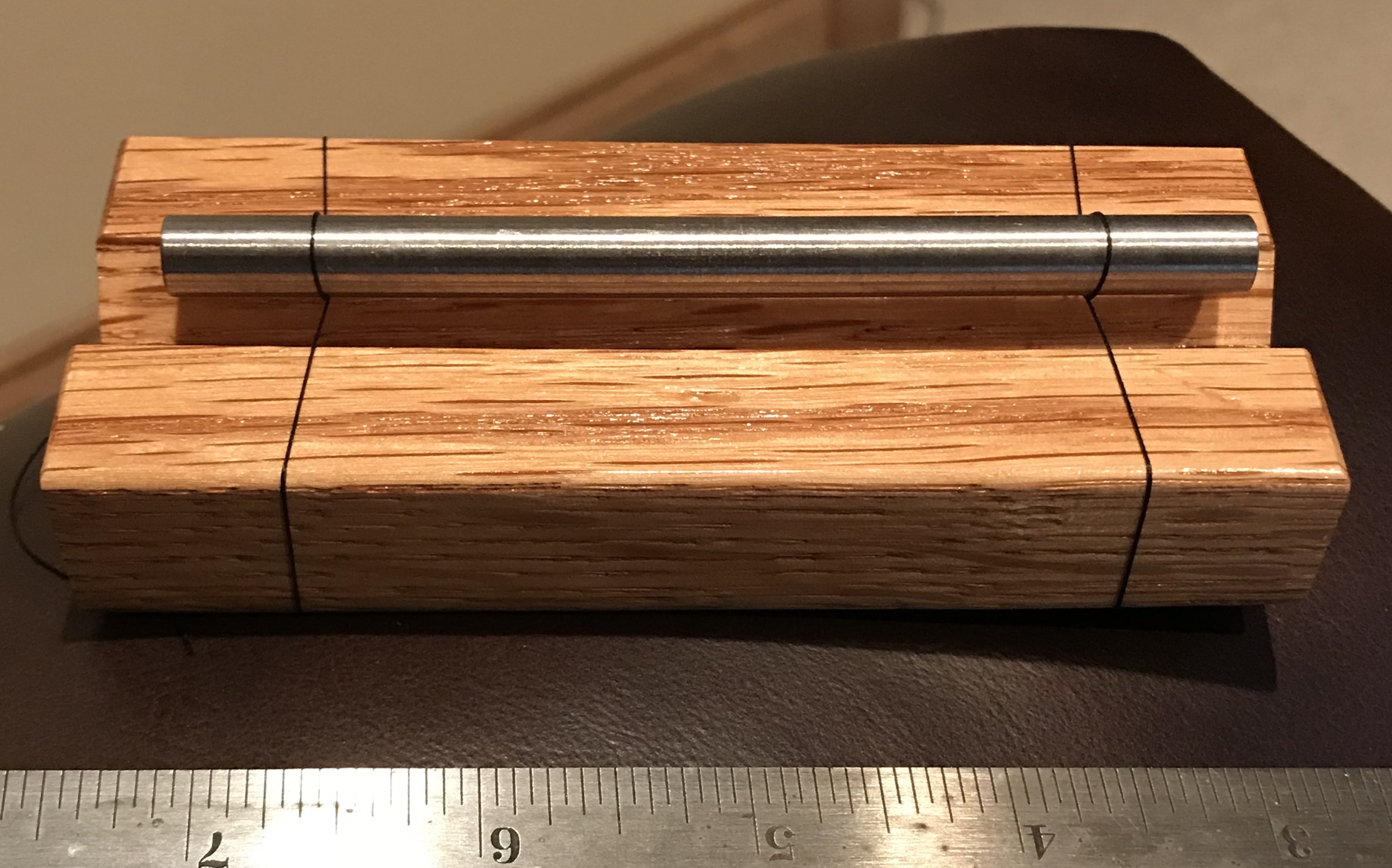We visited Bloomington and I saw this chime in a rock shop. It seemed like a simple partial day project. I found a short length of oak 3/4" X 2" X 4 3/4". It was placed in the vise on the mill and the largest 3/8" shank chamfering bit was used to cut a vee groove centered down the long face. The vee groove ended up about 3/8" deep. The corners of the block were rounded off with a corner plane and all sides were sanded to 150 grit. The block was then coated 2X with shellac using a light sanding between coats.
A 1/4" X 4 1/4" length of drill rod was cut off with a hack saw, faced and chamfered on both ends. A few types of string/thread were tried, but were either too thick dampening the sound or too thin and could not be tightened without breaking. Some seriously strong black thread was found at Jo-Ann's Fabric. It is Coat's extra strong upholstery thread. A length of this thread was wrapped once around the rod (about 1/2" from one end) and then around the block and tied on the bottom of the block. A small screw was placed under the thread near the knot and twisted until the thread was tight. A second thread was placed similarly around the other end of the rod.

This worked well and gives a nice extended sound when struck by a wooden pencil. Two things remain to complete the chime. The screws need to be replaced with threaded rod and pockets made for the rods in the back of the block. A mallet also needs to be made.
A 1/8" end mill was used to cut the two mortices in the bottom of the block centered on the short dimension and 1/2" in from the ends. Two screws with their heads removed were used to twist the threads and the screws were then laid in the mortices underneath the threads. This is shown below.

The head of a mallet was made from 3/4" dowel. The dowel was cross drilled 1/4" on center. A 2 1/2" length was chucked in the lathe and one end was faced. The diameter was reduced to about 5/8". The free end was chamfered. The center was further reduced to about 1/2". The flat end was too long so was removed from the chuck and cut off and then refaced. The part was reversed in the chuck and the end was rounded via a calculated set of cuts. This end was then sanded as well.
The mallet handle was made from 1/2" oak square stock cut to about 5 1/2". A 5" length was rounded after center drilling and fixing the free end in a center. The final 1/2" was reduced to 1/4". The headstock was then rotated approximately 1 1/2° (1/2 * arcsin(0.25/4)). The taper was cut without tailstock support so was done in 0.005" increments. The handle was sanded to 150 grit. The handle was cut off of the starting block with a saw and the new end sanded and a round chamfer was sanded as well.
The mallet head was stained with a dark walnut stain, while the handle was stained with golden mahogany stain. Both were allowed to dry for eight hours.